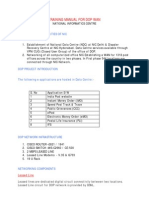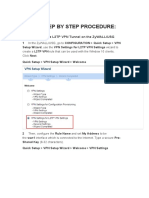0% found this document useful (0 votes)
13 views2 pagesLecture - 2 Study Notes
The document discusses various data structures and their applications in computer science, highlighting their importance for efficient data organization and manipulation. Key structures include arrays, linked lists, stacks, queues, trees, graphs, hashing, heaps, tries, and disjoint sets, each with specific use cases in fields like database management, computer graphics, and artificial intelligence. Understanding these structures is crucial for optimizing computational efficiency in diverse applications.
Uploaded by
chandrakalabhatt9066Copyright
© © All Rights Reserved
We take content rights seriously. If you suspect this is your content, claim it here.
Available Formats
Download as PDF, TXT or read online on Scribd
0% found this document useful (0 votes)
13 views2 pagesLecture - 2 Study Notes
The document discusses various data structures and their applications in computer science, highlighting their importance for efficient data organization and manipulation. Key structures include arrays, linked lists, stacks, queues, trees, graphs, hashing, heaps, tries, and disjoint sets, each with specific use cases in fields like database management, computer graphics, and artificial intelligence. Understanding these structures is crucial for optimizing computational efficiency in diverse applications.
Uploaded by
chandrakalabhatt9066Copyright
© © All Rights Reserved
We take content rights seriously. If you suspect this is your content, claim it here.
Available Formats
Download as PDF, TXT or read online on Scribd
/ 2





























































































